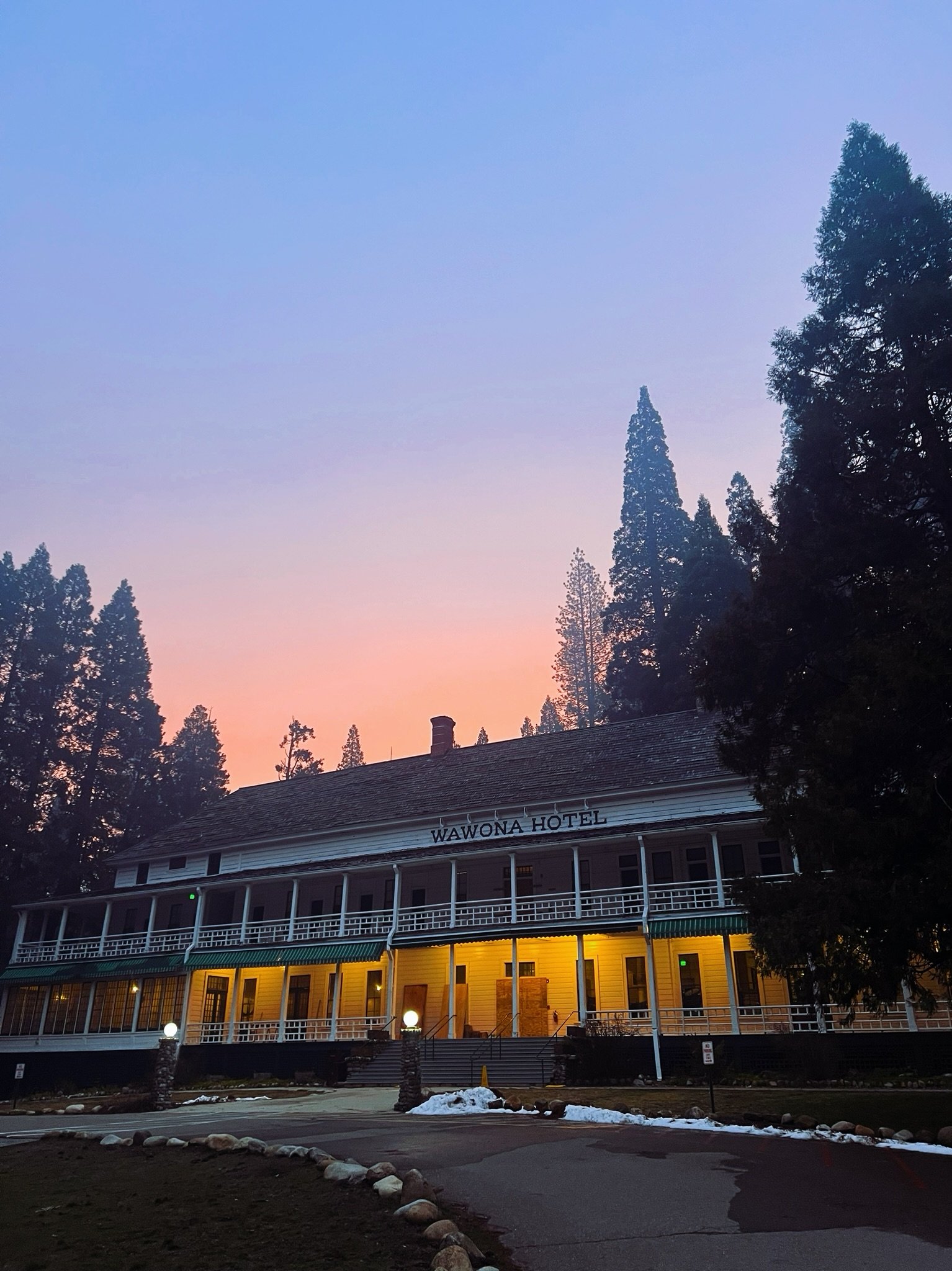The Mystique of the Wawona Hotel: A Historical Journey
Wawona Hotel, Yosemite National Park.
In the heart of Yosemite National Park, nestled amidst the majestic Sierra Nevada mountains, is the historic and charming Wawona Hotel. Legend whispers of a spectral airman who met a premature end here in the 1920s. Anecdotes of his presence add a dash of the supernatural to the hotel's captivating history, reinforcing its allure.
The Fabled Phantom of Wawona
"Legend whispers of a spectral airman..."
In the early 20th century, a small aircraft, combating the unforgiving elements, descended tragically near the Wawona Hotel. The injured pilot was rushed to Moore Cottage - a quaint, gingerbread-style building on the hotel grounds. Tragically, the medical help arrived too late. To this day, it is said that a spectral figure, clad in a pilot's attire, can be seen haunting Moore Cottage.
Moore Cottage: A Storied Stopover
"A quaint, gingerbread-style building..."
Moore Cottage, initially known as "Little Brown", is a charming structure built in 1894. The cottage, named after Edwin Moore, a partner of Galen Clark, the initial settler of Wawona, has its fair share of intriguing tales. Despite ghostly rumors, Moore Cottage stands as a delightful abode for visitors, echoing its initial Native American name, Pallachun, meaning "a good place to stop."
The Dawn of Wawona: Galen Clark's Legacy
"The initial settler of Wawona..."
Galen Clark, regarded as the "discoverer of the Mariposa Grove of giant trees," was the first non-native settler of Wawona. Clark arrived in Mariposa County in 1853, lured by the shimmering allure of California gold. Soon, his attention shifted from mining to surveying government land, leading to the inception of Wawona.
Table: Timeline of Galen Clark's Journey
YearEvent1853Arrived in Mariposa County1855First visit to Yosemite Valley1857Built a log cabin at Wawona1864Act of Congress transfers Yosemite Valley to the State of California1869Brought in Edwin Moore as a partner1874Clark's Station sold to Washburn, Coffman & Chapman
Clark's contribution to Wawona's history was monumental. He was instrumental in its development, from the construction of a log cabin and a bridge over the Merced River, to the creation of trails. His humble abode, Clark's Station, soon became a haven for travelers journeying from Mariposa to Yosemite Valley.
The Washburn Era: The Expansion of Wawona
"Clark's Station sold to Washburn, Coffman & Chapman..."
In 1874, the ownership of Clark's Station transitioned to the stagecoach firm of Washburn, Coffman & Chapman. Albert Henry Washburn and his brothers, Edward and John, were instrumental in transforming the Wawona Hotel into the landmark it is today. Simultaneously, the Washburns' Yosemite Stage & Turnpike Company was engaged in constructing roads connecting Wawona with Yosemite Valley.
As the influx of tourists grew, the need for additional accommodations became evident. The Washburns responded by constructing the Long White building in 1876, renamed later as the Clark Cottage. Unfortunately, a fire in 1878 devastated all structures at the Big Tree Station, sparing only the Long White and the stables. Undeterred, the Washburns hired Joseph Shelly to construct the iconic two-story main hotel building, which opened in April 1879. Five additional buildings were constructed between 1884 and 1918, marking Wawona as the largest Victorian hotel complex within a national park's boundaries.
Native American Influence: The Name 'Wawona'
"Big Tree Station be given the more mellifluous Indian name Wawona..."
Jean Bruce Washburn, Henry's wife, suggested that Big Tree Station should be renamed Wawona, an indigenous term. However, the meaning of 'Wawona' remains a topic of debate. Some claim it translates to "Big Tree," while others argue that it refers to the Dense-flowered Evening Primrose, a plant with seeds harvested and consumed by the local Native Americans.
A Return to Native Practices: Forest Management
"Washburn paid attention to Native American customs..."
Henry Washburn was a vocal advocate for Native American forest management practices. He criticized contemporary methods and called for a return to the traditional ways of the native inhabitants, who, according to Washburn, kept the forest clean and healthy by conducting controlled burns every few years.
The Legacy of Thomas Hill: Artistic Ties to Wawona
"Landscape painter Thomas Hill..."
Wawona's historic charm attracted several artists, including renowned landscape painter Thomas Hill. Famous for his painting "The Driving of the Last Spike", Hill's career transformed after his first visit to Yosemite Valley in 1865. A studio was built at Wawona for Hill, which now serves as a visitor center. His daughter, Estella, married John Washburn, further strengthening Hill's connection to Wawona.
The Jorgensen Cabin: A Historic Relic
"Norwegian-born Chris Jorgensen..."
Chris Jorgensen, another artist deeply connected with Yosemite, built a studio-home on the north bank of the Merced River in Yosemite Valley in 1900. The cabin, which may have been used to accommodate President Theodore Roosevelt during his Yosemite visit in 1903, is a significant historical structure today.
Pioneer Yosemite History Center: An Architectural Time Capsule
"An open-air museum of vernacular mountain architecture..."
The Pioneer Yosemite History Center, situated next to the Wawona Hotel, is an open-air museum of vernacular mountain architecture. The center has preserved several historic structures from different locations in Yosemite, including the Jorgensen cabin, which were relocated to Wawona in the late 1950s and early 1960s.
The mystique and charm of the Wawona Hotel continue to captivate visitors, with its rich history, supernatural tales, and storied buildings offering a unique blend of the past and present. A stay at Wawona is not just a vacation, but a journey through time, as each corner of the hotel whispers tales from a bygone era.
